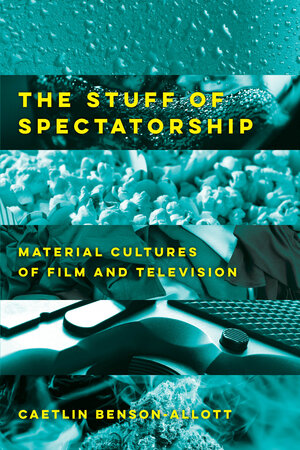By Caetlin Benson-Allott, author of The Stuff of Spectatorship: Material Cultures of Film and Television
This guest post is part of our #SCMS2021 conference series. Visit our virtual exhibit to learn more.
In January 2018, Vice reporter Emerson Rosenthal observed that “watching The X-Files stoned is the only good thing about 2018.” Musing on “why us reefer heads are hell-bent on ingesting weapons-grade THC percentages… to make watching things like The X-Files even more entertaining,” Rosenthal asks, “did you know there’s also a strain of weed called X-Files? Yeah. The X-Files is weed.”
He is right: there is a sativa-dominant strain of indica known as X-Files. Noted for being potent, energizing, and uplifting, this strain’s high THC levels also mean that it can generate a strong cerebral high and plenty of paranoia—not unlike the television show for which it is named. X-Files marks an intersection of television culture and cannabis culture, suggesting that what viewers consume while watching television plays an important role in how they understand TV and incorporate it into their lives.
“The physical objects and forces circulating around film and television change how we make sense of their content and the very concepts of film and television.”
Caetlin Benson-Allott
The same is true of many other substance and things that accompany our television and film viewing. Since the 1970s, movie theater owners have included beer, wine, and cocktails on their concession menus to help brand their venues and distinguish them from the competition. Network merchandise, such as the tee-shirts, bistro mugs, and coffee table books that Turner Classic Movies sells its fans help transform their love of the network into a (branded) lifestyle. The packaging and physical decay of prerecorded videocassettes and DVDs also shape our ideas about television and film history more than we realize. Even cinema violence plays a role here: shootings and stabbings in movie theaters have profoundly altered how some films are received and remembered.
My new book, The Stuff of Spectatorship: Material Cultures of Television, argues that the physical objects and forces circulating around film and television change how we make sense of their content and the very concepts film and television. While TV shows and movies create worlds, they are also of the world. We never encounter them in a vacuum. For that reason, the commodities and comestibles that surround viewers impact viewers’ relation to media content and one another.
Below: Author Caetlin Benson-Allott offers a sneak peek at The Stuff of Spectatorship
This has never been clearer than during the COVID-19 pandemic, when movie theaters around the globe closed—some temporarily, some permanently—to slow the transmission of a novel coronavirus. Cinema employees and fans stayed home while the National Association of Theater Owners (NATO) scrambled to figure out how to make moviegoing safe—or at least safe-seeming—once again.
The problem came down to one of material culture—and money, of course. Exhibitors make up to 50 percent of their profits from concessions, not ticket sales (which they have to split with distributors). Since 2014, many theater owners had come around to the idea that alcohol sales would be “the future” of cinema, that it would save theaters’ bottom line just as popcorn did during the Great Depression. But how can anyone drink beer or munch popcorn through a mask? Masks are a cornerstone of NATO’s much-touted CinemaSafe program, but they’re fundamentally at odds with the material culture of cinemas—at least for now. Material media cultures change all the time and will continue to change in response to the COVID-19 pandemic.
The Stuff of Spectatorship encourages readers to expand the range of objects they consider part of media culture while teaching them how to think about the impact of material culture on film and television spectatorship and reception. Why does Turner Classic Movies have a wine club? Why was John Singleton excoriated for shootings associated with Boyz N the Hood when Christopher Nolan was never blamed for the mass murder at a screening of The Dark Knight? How did VHS change viewers’ understanding of television history? Why isn’t Looking for Mr. Goodbar available on any (licensed) digital video platform—and what’s going to happen to it when the remaining VHS and Laserdisc copies disintegrate? The Stuff of Spectatorship answers these questions and poses one more:
What objects, substances, and material forces impact your interpretation of film and television?

